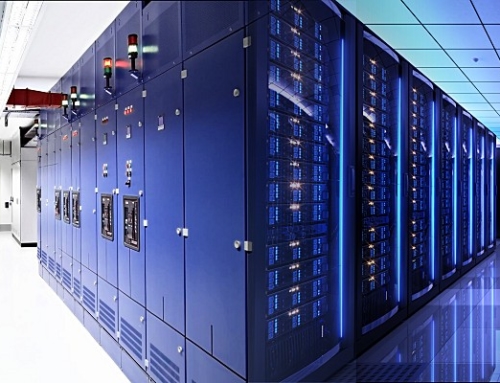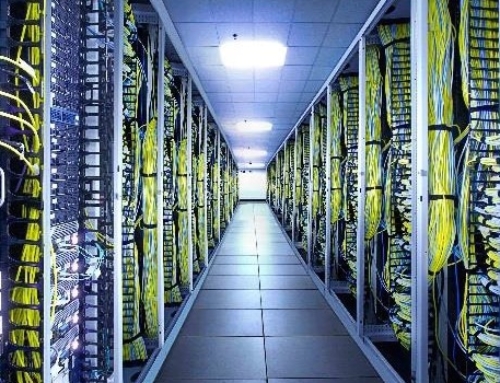It’s a good time to be an IT professional, especially a data centre professional. Today’s digital world is fueled by new technologies, enabled by the introduction of architectural changes, where skills like software development and IT management have become deeply intertwined. Consequently, technology providers are creating ever more sophisticated and advanced solutions to satisfy the needs of an interconnected and services-rich environment.
Many new drivers are changing the way we operate, such as rich media, collaboration environments and cloud-services delivery models. The massive influx of data from the growing Internet of Things is what really dictates the new requirements for the IT infrastructure: transaction times, transaction security, customer data protection, just-in-time offerings and more.
These new technologies have spurred new initiatives whose success depends on the data centre’s infrastructure. Businesses are responding accordingly. Gartner reports that worldwide IT spending is on pace to total $3.8 trillion this year. In Computerworld’s annual forecast survey of IT executives, 43 percent of respondents said that they expect their IT budgets to increase, up from 36 percent in last year’s study. A significant amount of that money is going to the data centre—just ask Google. The company spent more than $3.5 billion on “real estate purchases, production equipment, and data centre construction” during the fourth quarter of 2014 and nearly $11 billion for the year.
In the recent past, data centre budgets went primarily to upgrading or modernizing infrastructure, including building new data centres and implementing virtualization technologies, and the start of deploying workloads to cloud computing. Success was measured by improved energy efficiencies, lower TCO and, of course, good ROI.
Today, innovation is the driving force. Digital transformation initiatives, driven by business needs, are fueling the ongoing need to have highly scalable, always-available, secure data centres that these innovative initiatives can depend on. The goal for the modern IT data centre is to be the elastic infrastructure to support business innovation initiatives (BIIs). Some call it IT as a service (ITaaS).
Below are four of the many IT projects that companies are investing in. These projects depend on the data centre infrastructure: network, storage, computing and security services.
- Big data analytics: Digital data volume is projected to reach 44 trillion gigabytes by 2020. Big data analytics enable the analysis and transformation of data into valuable insights that lead to new products and services.
- Storage and server virtualization: This transition continues to be a major focus in order to meet high-availability and business-continuity requirements needed by the influx of business-driven IT projects.
- Cloud services and cloud-based applications: This area continues to be a major emphasis for most companies. Everyone is already (or will be) working on, or supporting, some sort of private, hybrid or public cloud-based application.
- Devices: Smart(er) devices generate massive volumes of data, and the opportunity is to capture it, manage it and turn it into useful information—in real time.
Although this mix of rapidly changing business needs and rich architectural offerings is generating opportunities, it is also placing a knowledge burden onto an evolving IT workforce, whose mandate is to become more and more focused on adding business value to their organization. What really matters is what we get from the new technology in practical terms, rather than how interesting or amazing the technology is. A good technology architect now must be able to clearly explain the value proposition of his or her solution.
This is an ongoing transformation that requires a shift in the way IT professionals plan and operate their careers. New technologies are shaping the workforce of the future, and the skills needed to meet the demand of our new digital age can be built on your current foundational skill set, regardless of whether you come from the IT world, the services world or the software-development world.
The IT workforce of the future will be an organized mix of all skill sets and will be capable of providing first-in-class support to professionals of the future, no matter which vertical they are attached to. It is likely that as you continue along your career path, you will find some technology areas in which you could stand to learn more. As usual, planning, designing, managing, implementing, troubleshooting, supporting and project managing apply; it’s a matter of adding expertise in these areas to support more-complex projects that you want to work on. Perhaps you have already been in the data centre profession for several years and are well respected as a network administrator or data centre engineer. If so, some advanced technology areas to add to your skill set include the following:
- Network programmability or software-defined networks: Simplifying network architecture and operations
- Cloud: Automation, orchestration, provisioning and cloud bursting (an application runs in a private cloud or data centre and bursts into a public cloud when the demand for computing capacity spikes)
- Fabric-based or unified computing: Coupled compute servers, storage and networks linked by high-bandwidth interconnects like 10 Gigabit Ethernet
Data centre professionals already know that the demand for their services is strong. Recent job listings using a popular job-posting site for various data centre job titles pulled up more than 13,000 available positions in the United States, United Kingdom, India and Australia combined.
Every region across the globe is experiencing strong demand for data centre professionals, and the salaries for those positions reflect this demand. For those who choose a data centre career, there is a wide variety of job roles or types, ranging from network administrator to senior network architect or senior data centre architect, from associate to master or expert level. There are multiple management choices as well. It’s a career path rich with possibilities.
- Article Source: DataCentreJournal.com






